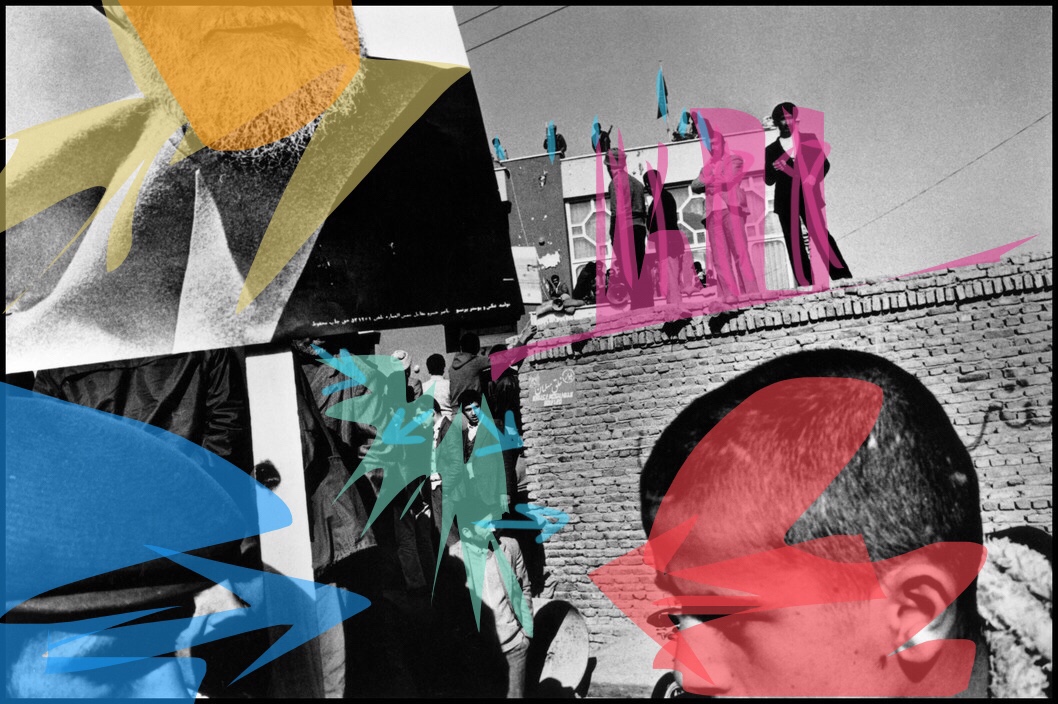Gilles Peress: a photographer who I admire. He shoots with his heart, and seeks to use his photography as a tool to enact positive change in the world. Not only that, but his compositions are magical.

1. Gather evidence for history

I don’t care so much anymore about ‘good photography’, I am gathering evidence for history. – Gilles Peress

2. Shoot more like a forensic, police photographer.

I work much more like a forensic photographer in a certain way, collecting evidence. I’ve started to take more still lifes, like a police photographer, collecting evidence as a witness. I’ve started to borrow a different strategy than that of the classic photojournalist. The work is much more factual and much less about good photography. I don’t care that much anymore about “good photography.” I’m gathering evidence for history, so that we remember. – Gilles Peress
3. Provide a visual continuum of experience and existence

I set out only a provide a visual continuum of experience, of existence. – Gilles Peress
4. Let the viewer come up with their own story about your photos

I don’t like to describe my photographs; it’s up to the viewer to make up his mind what they are about. – Gilles Peress
5. No categories

I always try to escape categories because where those categories are attached, predictable forms, they really have very much to do with market, or where to market the pictures. I’m interested in what’s unpredictable, and I’m interested in what happens in the no-man’s-land between known categories. – Gilles Peress
6. Photography is creating a visual diary

Every picture I take is like a diary entry. – Gilles Peress
7. Make meaningful photos to show to the world

When I shoot a picture of somebody who’s really seriously hurt, there’s an unspoken exchange. Even if I could speak the language, I could not formulate the question, which is: “Can I take your picture?” In that situation, taking a photograph for the sake of taking a photograph is very trivial. The challenge is finding the language to say, “Can I take your picture in a way that is meaningful?” You don’t do it with words. You do it with the eyes. You’re present there with them and they know that you have a question to ask. They read your body language and they decide whether to show themselves or to hide, whether they want to be photographed. They answer with their own unspoken language. I mean, you see it right away. You can feel it right away. It’s in the eyes, and they tell you, “Yes, I want you to show this to the world.” – Gilles Peress
Gilles Peress Composiitons
Composition 1: Boy at demonstration










Composition 2:









Composition 3:








Composition 4:





Composition 5:





Composition 6:








Composition 7:









Composition 8 (arabesque/curve):






Composition 9 arabesque:







Composition 9:




MASTERS

Dear friend, if you haven’t heard the exciting news already– MASTERS is now available as both a digital and print edition!
Timeless wisdom from the masters of street photography.
“He without a past has no future.”
Start here:
- Why Study the Masters of Photography?
- Great Female Master Photographers
- Cheat Sheet of the Masters of Photography
- 100 Lessons From the Masters of Street Photography
- Beginner’s Guide to the Masters of Street Photography
- Download All Articles >
The Masters of Photography

Classics never die:
- Akira Kurosawa
- Alexander Rodchenko
- Alfred Stieglitz
- Alec Soth
- Alex Webb
- Alexey Brodovitch
- Anders Petersen
- Andre Kertesz
- Ansel Adams
- Araki
- Blake Andrews
- Bruce Davidson
- Bruce Gilden
- Constantine Manos
- Daido Moriyama
- Dan Winters
- David Alan Harvey
- David Hurn
- Diane Arbus
- Dorothea Lange
- Edward Weston
- Elliott Erwitt
- Eugene Atget
- Eugene Smith
- Fan Ho
- Garry Winogrand
- Gordon Parks
- Helen Levitt
- Henri Cartier-Bresson
- Irving Penn
- Jacob Aue Sobol
- Jeff Mermelstein
- Joel Meyerowitz
- Joel Sternfeld
- Josef Koudelka / Part 2
- Josh White
- László Moholy-Nagy
- Lee Friedlander
- Lisette Model
- Magnum Contact Sheets
- Magnum Photographers
- Mark Cohen
- Martin Parr
- Martine Franck
- Mary Ellen Mark
- Nan Goldin
- Rene Burri
- Richard Avedon
- Richard Kalvar
- Robert Capa
- Robert Frank
- Saul Leiter
- Sergio Larrain
- Sebastião Salgado
- Shomei Tomatsu
- Stephen Shore
- The History of Street Photography
- Todd Hido
- Tony Ray-Jones
- Trent Parke
- Vivian Maier
- Walker Evans
- Weegee
- William Eggleston
- William Klein
- Zoe Strauss
For more inspirational free resources, join ERIC KIM NEWSLETTER and be the first to get exclusive content, access to books, presets, and new upcoming workshops.



